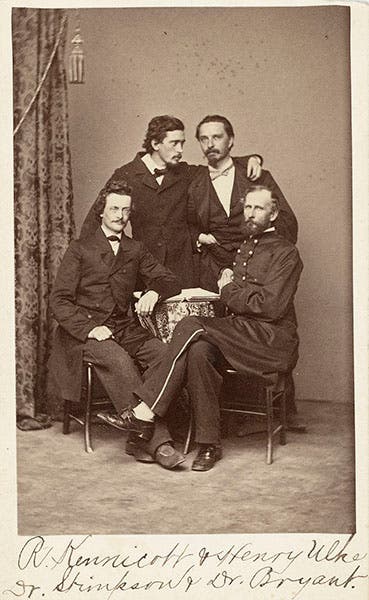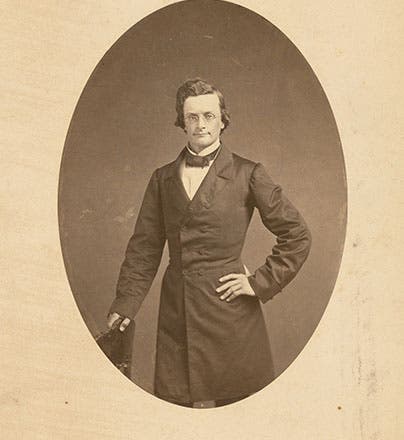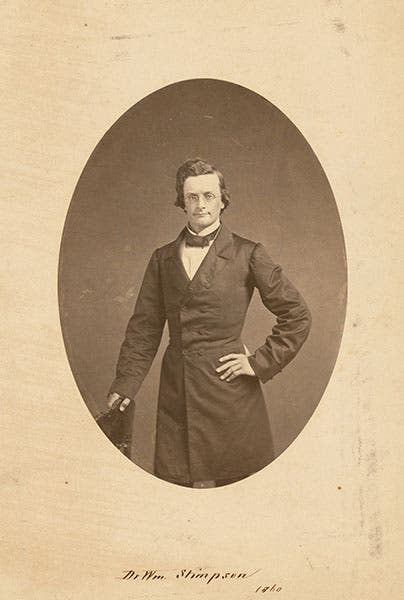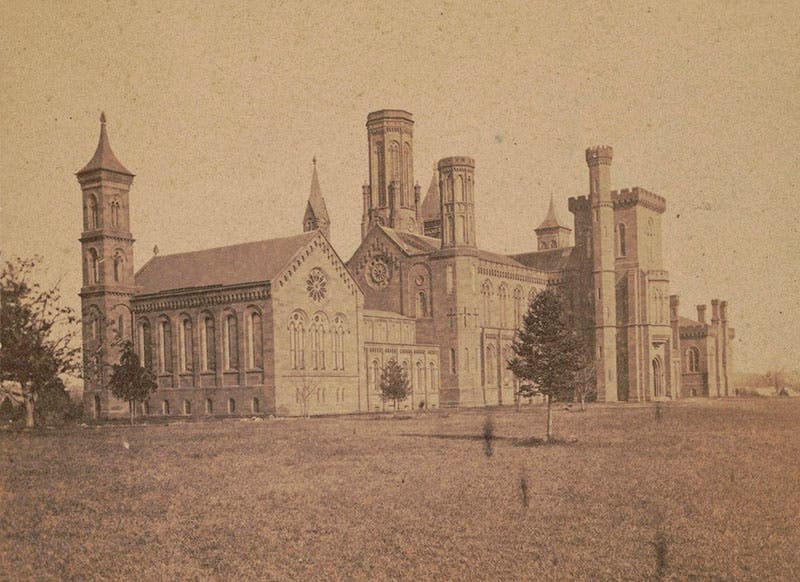Scientist of the Day - William Stimpson
William Stimpson, an American marine zoologist, died May 26, 1872, at age 40. In 1852, he came to the recently founded Smithsonian Institution, the first building of which, the Castle, only partly constructed, had opened for business in 1849. Stimpson then left to take a position as marine scientist aboard the North Pacific Exploring Expedition, 1853-56, the United States' second effort at a national voyage of discovery, this time exploring the East Indies and China. When he returned to Washington, D.C., in 1856, with a large collection of marine invertebrates, Stimpson took up residence in the still-unfinished Smithsonian Castle. One of his initial contributions to the Institution was to install the first aquarium in the United States. Aquaria had suddenly become all the vogue in England, and would become similarly popular in the United States, thanks to Stimpson’s initiative.
We show here an actual photo of the Smithsonian Castle as it stood in 1864,and link to an architect’s projection of the building when completed, as printed in 1849.
In 1857, Stimpson organized a small group of younger associates into what was called the "Megatherium Club". These boisterous naturalists were given to working hard all day and partying most of the night. When the Civil War began, the membership all moved into the upper regions of the Smithsonian Castle itself, so they didn't have far to go between their workplace and their party rooms. They would greet each other with the cry, “How-How,” supposedly the call of the extinct giant ground sloth Megatherium. Other members of the Megatherium Club included Ferdinand Hayden and John Strong Newberry, both Western explorers; Edward Drinker Cope, a paleontologist, and Robert Kennicott, a naturalist and herpetologist. The Assistant Secretary of the Smithsonian, Spencer Baird, kept a benevolent eye on the revelers, and did his best to shield them from the wrath of the Secretary, Joseph Henry, who had his reservations about the young upstarts who shared his living quarters (Henry had moved into the upper floor of the Castle in 1849).

Group portrait of four members of the Megatherium Club; William Stimpson is at bottom left; the others are, clockwise from Stimpson, Robert Kennicott, Henry Ulke (who also took the photograph), and Henry Bryant; photograph, 1863, National Portrait Gallery, Smithsonian Institution (Wikimedia commons)
The Megatherium Club dissolved in 1866 when Stimpson moved to Chicago, with his entire collection of specimens, to head up the Chicago Academy of Sciences. The Academy erected a fire-proof building to house the collections, but it wasn't fire-proof enough, and all of Stimpson's specimens and manuscripts succumbed to the Great Chicago Fire of 1871. Stimpson did not survive long himself, dying of tuberculosis nine months later. He is buried in an unmarked grave in Saint John’s Cemetery of Howard County, Maryland.
William B. Ashworth, Jr., Consultant for the History of Science, Linda Hall Library and Associate Professor emeritus, Department of History, University of Missouri-Kansas City. Comments or corrections are welcome; please direct to ashworthw@umkc.edu.








